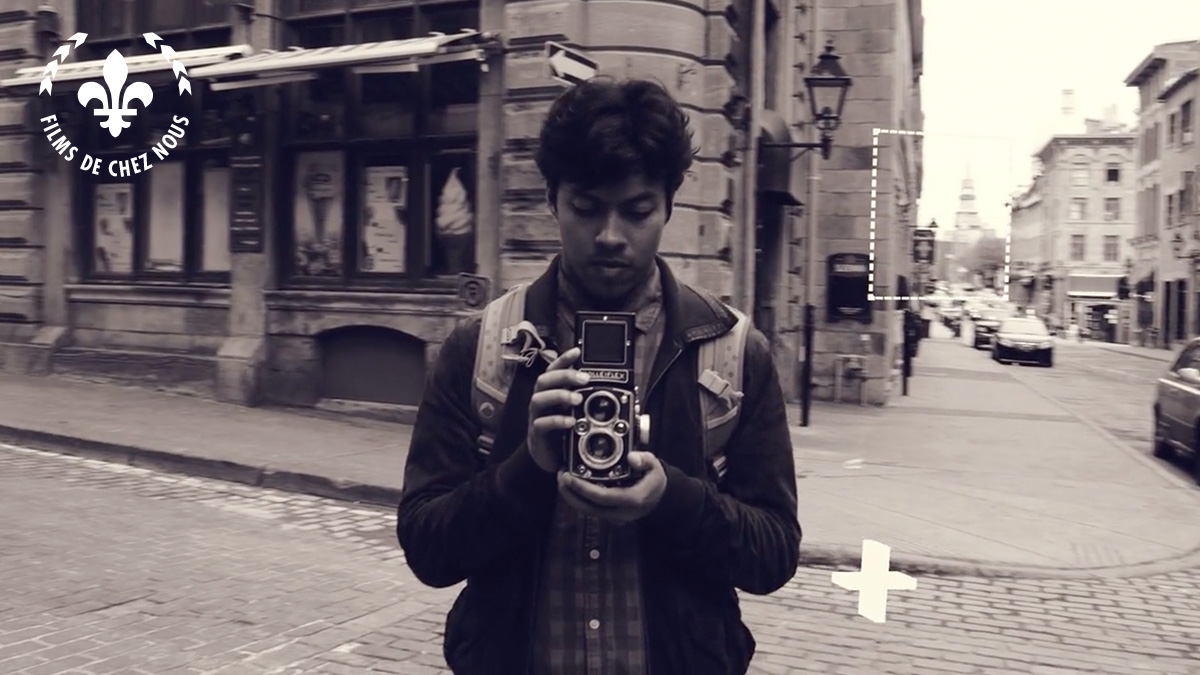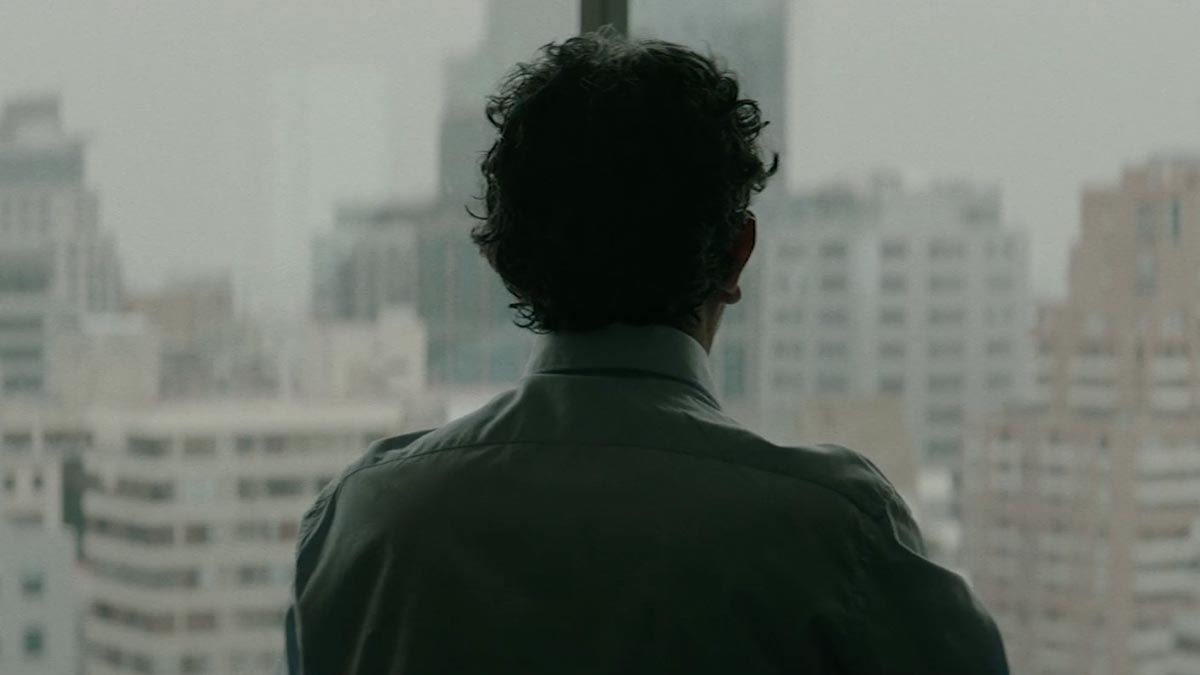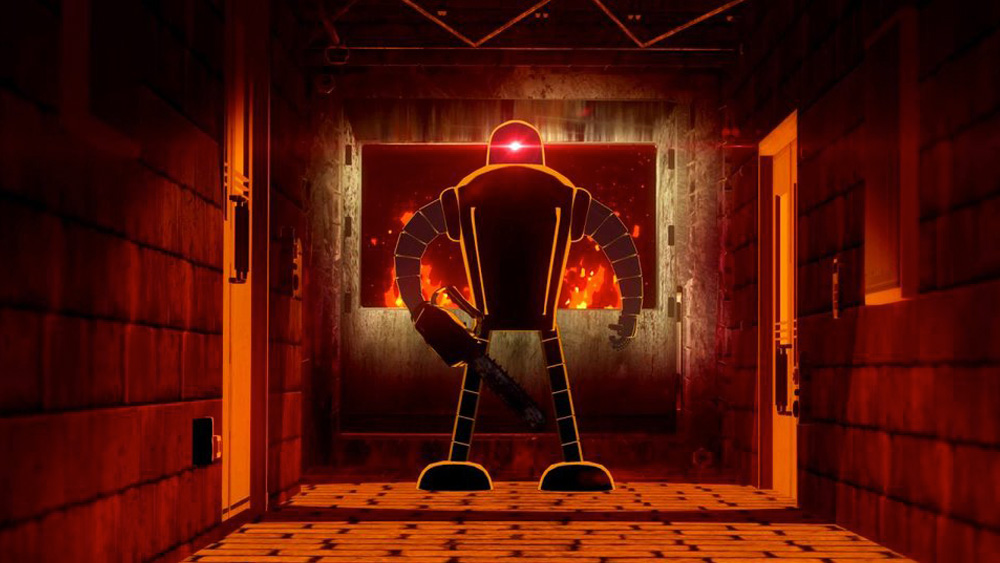A dystopian drama with flourishes of body horror that depicts a near future where an authoritarian government turns those it deems criminals into trees as part of an insidious environmental campaign.
Director Tony Hipwell’s dystopian horror short film, “Standing Woman,” plunges viewers into a near-future world where the government has devised a disturbing solution to deal with criminals and immigrants. Instead of imprisonment or deportation, they are transformed into trees as part of an insidious environmental campaign. Adapted from the short story by renowned writer Yasutaka Tsutsui, author of “Paprika” and “The Girl Who Leapt Through Time,” this cautionary tale explores a world that has drifted into the realm of bio-fascism, serving as a chilling reminder of how societal extremism can intersect with environmental concerns.
The story revolves around Tom, a propaganda filmmaker played by Anton Thompson, who works for the government. Tom grapples with the recent transformation of his wife, Mari, portrayed by Yuriri Naka, for expressing seditious views. Tom embarks on an emotional journey to bid a final farewell to Mari, encountering others affected by this harrowing regime along the way. The film showcases exceptional depictions of a population slowly being turned into vegetation, crafted by a production team with an impressive track record in projects such as “Censor,” “Doctor Who,” “Peaky Blinders,” and “Victoria.” “Standing Woman” paints a vision that, in an unsettling way, feels all too close to reality.
“Fear takes root…”
“Standing Woman” is a testament to the power of storytelling and visual art to convey thought-provoking narratives and examine the intersection of authoritarianism, environmentalism, and human rights. Director Tony Hipwell’s journey to bring this adaptation to life, including securing the rights from Yasutaka Tsutsui, is a testament to the enduring relevance and impact of speculative fiction in today’s world, where global challenges and societal unrest have made its cautionary tales even more pertinent

“Standing Woman” explores an unusual and dystopian concept of criminals being transformed into trees for an environmental campaign. What inspired this unique premise, and how did you develop it?
The premise owes its origin to Yasutaka Tsutsui, the author of the original short story with the same name. I wouldn’t presume how he came to the idea but to me it always seemed to have a dreamlike quality to it. It was written at a time when environmentalism was less pronounced, so I imagine the premise was more focused on the juxtaposition of the almost romantic notion of being turned into a tree set against the ever ugly reality of an authoritarian state. The idea of an almost benign dictatorship with people being slowly vegetised has a morbid believability to it. That aspect was something we expanded on in the short with a much more overt eye to the regime that has facilitated this green incarceration and the methods it uses to make them palatable to the populace.

The film touches on the concept of eco-fascism. Could you elaborate on how this extreme environmentalism influences the world and the characters within “Standing Woman”?
Something that I’ve found fascinating (and disturbing) over the years is seeing how progressive ideas can be weaponised by the state. It would seem protecting the planet and our future should not be controversial and yet it is. The British Government recently rolled back commitments for net zero and laid the blame on consumers’ shoulders. It’s apparently just too much for them to bear so we’ll postpone it for another generation to deal with at a far greater cost. I was intrigued by this habit of governments to wrestle control of an idea and use it for their own means to control the people. As we have sadly seen around the globe, immigrants and minorities are persistently used as scapegoats. If an authoritarian government could lump them in with criminals and dispatch a more palatable form of capital punishment under the auspice of climate justice, the general public would likely be far more conducive to this. Why deport immigrants or imprison criminals when you can turn them into trees? Why build prisons when you can plant a forest? These slogans felt very powerful to us as a form of control and any dissent could be answered by the government with the rebuttal that this is all to save the planet because clean air matters!
The film is based on a short story by Yasutaka Tsutsui, a renowned author known for works like ‘Paprika’ and ‘The Girl Who Leapt Through Time.’ What drew you to this particular story, and how did you approach adapting it for the screen?
It was such an immediately arresting concept. It’s such an odd idea taken at face value, the idea of people being turned into trees as a form of punishment, but when you follow it through to what that’s representing, it becomes endlessly fascinating. It captures a fundamentally alien world in a very human way by grounding it with this tragic love story. So that was always going to be the core of our adaptation.
With all that in mind, a really important thing for us was not white washing the adaptation. While the narrative transplanted readily to the sleepy villages of England, we didn’t want to lose the Japanese soul of the piece. The script was approved by Tsutsui which was essential and we cast a Japanese lead, Yuriri Naka. We also secured a Japanese composer, Sakiro Sakuragi. Both gave the film a wonderful contribution to the film and a vital link to the source material.

“Standing Woman” incorporates elements of body horror. How do these aspects contribute to the film’s narrative and atmosphere, and what challenges did they present during production?
The design of the tree people took up a huge amount of time, both in pre-production and production itself. We had to be careful because it could very easily become comic or too horrific. Our original concept art was beautiful, but it was just too romantic and veered into magical realism. This had to feel real and grounded. It also couldn’t be too gross as it had to be acceptable on a societal level. The propaganda machine has made this seem painless and that had to hold up to passing glances. But if you get closer, you can see there is blood running beneath the bark. It’s a quiet apocalypse happening to these people. I love body horror but ultimately we had to prioritise narrative and performance over spectacle. Tom has extended dialogue scenes around multiple tree people, so we didn’t want to distract the audience with too many gnarly details.
Creating these on set was a challenge, but an exciting one. We wanted the trees to be very individual, so every character is a different type. The Postman is an Oak Tree, the dog is a shrub and Mari is turning into a Cherry Blossom. We only had limited resources though, so we had to reuse elements to allow us to do these full size tree builds which were an incredible piece of sculpting by our Production Designer Bethan King. It was truly a team effort as these full size elements had to blend with the make up FX produced by Rachel Red and I was very happy we were able to achieve it all in camera.
The propaganda filmmaker, dealing with the transformation of his wife, takes center stage. Can you discuss the emotional journey this character embarks on and how it relates to the broader themes of the film?
In the original short story Tom is a writer. We wanted to keep him in a creative profession but there was such an exciting possibility in shifting him to being a filmmaker, especially one who creates propaganda. It makes him complicit in many ways and as a result, feels a crushing weight of responsibility for the fate of his wife. I have German family and when I was last in Berlin I went to the film museum which had an incredible exhibit with a room full of drawers. In each drawer was a film made by a Jewish filmmaker who had tried to work under the Nazi regime. They attempted to be ‘good citizens’ but every filmmaker behind the films in those drawers had ultimately been sent to the camps and never returned. Their propaganda films were now a grim epitaph. This really sat with me, and I felt was a compelling thread that could enhance the adaptation. Tom is culpable but not to blame and over the course of the film we see him trying to come to terms with this. It is in many ways one long wake as he encounters different people affected by this green dictatorship. They have all reacted differently. For better or worse, Tom is a survivor, but the question at the end of the film is for how much longer.
The propaganda backdrop also gave us licence to apply some satire. I grew up with BrassEye and Paul Verhoven and that scabrous tone was something I wanted to scatter that across some of the messaging and slogans seen in the film.
Could you delve into the environmental themes in the film, particularly how it comments on government policies and the impact on society? What kind of discussions or reflections are you hoping to provoke in your audience?
I think we need to ask ourselves what the true cost of climate change will be and who will be paying for it. If governments around the world have their way, it will likely be at the expense of the most vulnerable. That is not equitable or moral, but it is where we are heading and it needs to be called out. When Max and I were developing the short, we started before Trump, Brexit and so many massive shifts in the geo-political landscape and what had once seemed far fetched suddenly became far more real if the ever-thin veil of scientific discovery could unlock this kind of gene splicing. If the science for this existed, I’m convinced it would be used and the excuses for it would be no different to what we see in the film.
How did Yasutaka Tsutsui’s distinct style and storytelling influence the way you approached this adaptation, and what elements did you feel were crucial to maintain from his original work?
We were very influenced by the tone of the short story. There are off hand references to student protests but this is set against the slow creep of the vegetised. Most seem to be sleep walking through this mini genocide and with that comes a very subdued tone. We see this often in British film as well, so the adaptation felt very adjacent to what Tsutsui presented. We also took a lot of inspiration from Japanese cinema for aspects like the framing, colour palette and pacing. The film has a languid pace that builds to what is hopefully an emotionally affecting finale and that is very much down to the unique narrative the short story provided us. We wanted to stay as close as possible to the source material, but we did see opportunities to expand on that. There are acts of quiet rebellion throughout the short story, but Mari is quite passive. We really wanted to give her some more agency in the adaptation despite her fate. Max Gee, the screenwriter, came up with the ingenious grace note of Mari carving initials into herself as a final protest. It really transformed the ending, and I honestly forgot it was not in the original story, it felt so right for the closure of that relationship and character.

Beyond the unique premise, what messages or takeaways do you hope viewers will derive from “Standing Woman,” and how might it resonate with current environmental and political discussions?
We’ve seen a slow creep into fascism and authoritarianism around the world. It doesn’t always come with the clomp of jack boots, but the repression and suppression is very much there and it is spreading. It is weeding its way into even the quietest parts of our world without us really noticing. How it affects us and how we respond, or don’t respond to it is vital for the future. I feel we will be paying a heavy price for climate change, and we won’t have control over how it is paid but the ‘solutions’ will be made to seem just in a manner like the propaganda featured in the short. That will only continue as we hurtle further into this growing crisis.
Finally, can you tell us which are your favourite short films out there?
I have been lucky enough to see a great many over the last couple of years thanks to our festival run, but a couple that really stuck with me were O’ Glory and Demon Box. O’ Glory is an absolutely mind bending 70s set cosmic horror that is made with an almost intimidating degree of confidence and capability. And Demon Box is a wonderfully affecting tale of a Jewish man breaking down his inherited trauma through the prism of horror. We were up against it for best screenplay at FilmQuest last year and as soon as I saw it, I felt yep, hand over the trophy now.




